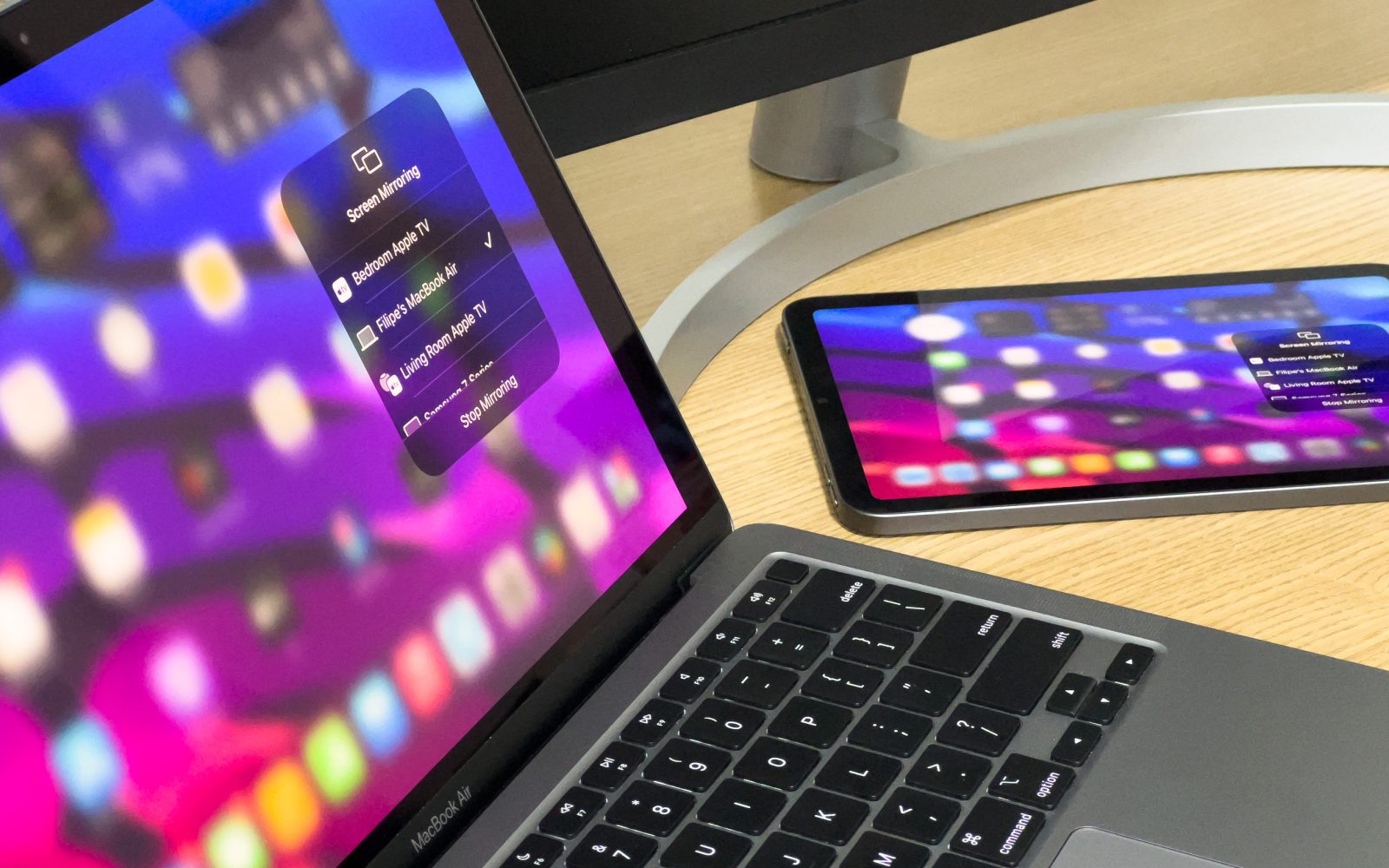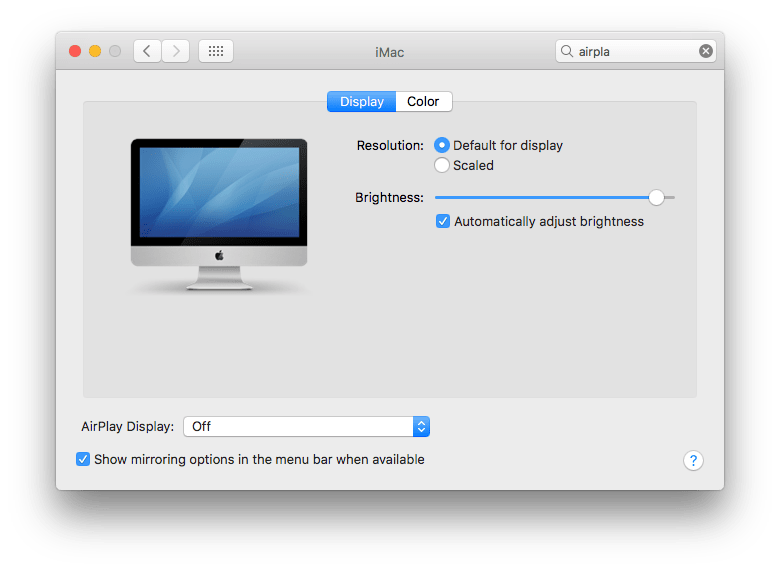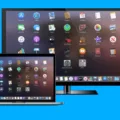The MacBook Air 2020 is an incredibly powerful, featherlight laptop from Apple that packs a lot of features into a slim package. One of the most useful features it boasts is AirPlay, which allows you to wirelessly stream video and audio content from your Mac to an Apple TV or other compatible device.
AirPlay lets you watch movies, listen to music, and share photos without ever having to plug any cables into your computer. Instead, the content is streamed directly over Wi-Fi using Apple’s proprietary technology. This makes it incredibly easy to share content with others—all they need is an Apple TV or another compatible device in order to view what you’re streaming.
The MacBook Air 2020 also makes it possible for you to mirror your display onto an HDTV or other display device. So if you’re giving a presentation or watching a movie on your laptop, everyone in the room can see it on the big screen as well. It’s also possible to play audio from the Mac through speakers connected via AirPlay—allowing you to enjoy rich sound quality without having to use any wires at all.
In order for AirPlay to work on the MacBook Air 2020, you need an Apple TV that connects wirelessly to your home network (or another compatible device). Once this is set up, open up iTunes or System Preferences and toggle “AirPlay Mirroring” on/off depending on what type of streaming you want to do.
Overall, if you want a lightweight laptop with powerful features like AirPlay built-in, then the MacBook Air 2020 is definitely worth considering!

Does the MacBook Air Support AirPlay?
Yes, MacBook Air models released in 2011 and later running macOS 10.8 (Mountain Lion) or later can use AirPlay to stream audio, video, and photos wirelessly to an Apple TV device that is a second-generation model or newer. To use AirPlay on your MacBook Air, you will need to connect it to the same Wi-Fi network as your Apple TV device. Once connected, you will be able to stream content from your computer directly to your TV.
Troubleshooting AirPlay Issues
AirPlay requires both your Apple TV and iOS device to be on the same Wi-Fi network for it to work. If this isn’t the case, AirPlay won’t be able to establish a connection between the two. Additionally, if you’re having trouble connecting, make sure that your iOS device is close to the Apple TV and that both devices are on and connected to Wi-Fi. If all else fails, try restarting both your Apple TV and your iOS device.
Enabling AirPlay Mirroring on a MacBook Air
To turn on AirPlay Mirroring on your MacBook Air, first, make sure that the device you want to mirror to (such as an Apple TV or smart TV) is powered on and connected to the same Wi-Fi network as your MacBook Air. Then, click the Control Center icon in the menu bar at the top of your Mac’s screen. From there, click Screen Mirroring and select the device you wish to mirror to. You should then see whatever is displayed on your MacBook Air appear on your selected device.

Which Macs Are Compatible with AirPlay?
AirPlay is a feature from Apple that allows you to wirelessly stream audio and video from your iPhone, iPad, or Mac to an Apple TV or other AirPlay-compatible device. To use AirPlay with your Mac, it must be running macOS Catalina 10.15 or later. The following Macs are compatible with AirPlay:
– MacBook Pro (2018 and newer)
– MacBook Air (2018 and newer)
– iMac (2019 and newer)
– iMac Pro (2017)
– Mac Mini (2020 and newer)
– Mac Pro (2019).
Additionally, you will need an Apple TV 4K or Apple TV HD connected to the same Wi-Fi network as your Mac. It can be connected directly to your television or used through a receiver.
Troubleshooting AirPlay Disappearance on Mac
AirPlay may have disappeared from your Mac if the option to show mirroring options in the menu bar is not checked. To check this, go to System Preferences > Displays and make sure that “Show mirroring options in the menu bar when available” is selected. If it is not selected, select it and then AirPlay should appear in your menu bar. Additionally, AirPlay will only appear if there are devices available for you to connect to. If you are still not able to see AirPlay after checking these settings, restart your Mac and try again.
Troubleshooting AirPlay Display Issues on Macbook Air
AirPlay display may be off on your MacBook Air for a few reasons. First, check to make sure that the Apple TV or HomePod you’re trying to connect to is powered on and connected to the same Wi-Fi network as your MacBook Air. If both devices are properly connected, restart your Mac and Apple TV or HomePod. Additionally, make sure that macOS is up-to-date and that any access restrictions on Apple TV or HomePod are not blocking AirPlay from working. Finally, check for any physical obstructions between the two devices that could interfere with the AirPlay connection.
Lack of AirPlay Receiver on Mac
It’s possible that AirPlay Receiver isn’t enabled on your Mac. To check, open System Preferences and click on Sharing. Look for the option labeled “AirPlay Receiver” and make sure it is enabled. If it’s not, enable it and then try using AirPlay again.
It’s also possible that your Mac doesn’t support AirPlay Receiver. To check if your device supports AirPlay, go to the Apple Support website and search for your specific model of Mac. If the specs for your model include “AirPlay: Yes”, then you should be able to use the Airplay receiver on your Mac.
Conclusion
In conclusion, AirPlay from a MacBook Air (2020) is possible as long as you have an Apple TV device that is a second-generation model or newer. Additionally, your MacBook Air must be running macOS 10.8 (Mountain Lion) or later in order to use the feature. AirPlay is a great way to share content between devices, making it easy and convenient to enjoy your media with friends and family.








